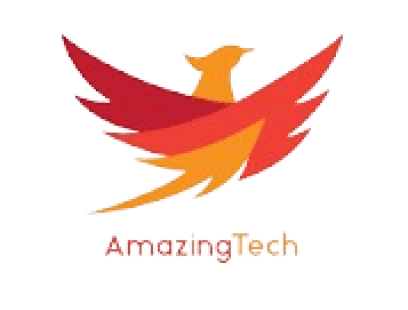
In today’s digital landscape, content management plays a crucial role in delivering engaging and personalized experiences to users across various platforms. As technology continues to evolve, traditional content management systems (CMS) face limitations in terms of flexibility, scalability, and seamless integration with emerging technologies. This has paved the way for the rise of headless CMS, offering a new paradigm in content management that embraces the future of digital experiences.
Table of Contents
- Introduction
- Understanding Headless CMS
- The Flexibility of Headless CMS
- Seamless Multi-Channel Content Delivery
- Embracing Emerging Technologies
- Enhanced Performance and Scalability
- Simplified Content Creation and Management
- Customization and Integration Options
- Challenges and Considerations
- The Future of Content Management
- Conclusion
- FAQs
Introduction
Content management systems have traditionally followed a monolithic architecture, where the front-end presentation layer and back-end content management capabilities are tightly coupled. However, this approach presents challenges when it comes to flexibility, scalability, and adopting new technologies. Headless CMS, on the other hand, decouples the front-end presentation layer from the back-end content management system, offering a more agile and versatile solution for managing content.
Understanding Headless CMS
Headless CMS refers to a content management system that focuses solely on content creation, storage, and delivery via APIs (Application Programming Interfaces). Unlike traditional CMS, which provides a built-in front-end, headless CMS serves content as raw data that can be consumed by any front-end application or device. This decoupling of the presentation layer allows for greater flexibility, enabling content to be delivered seamlessly across multiple channels and platforms.
The Flexibility of Headless CMS
One of the primary advantages of headless CMS is its flexibility. Developers have the freedom to choose any front-end development technology or framework to create a customized and unique user experience. Whether it’s a web application, mobile app, IoT device, or even voice assistants, headless CMS provides the content infrastructure needed to deliver content to any channel or touchpoint. This flexibility empowers organizations to adapt quickly to changing customer expectations and emerging technologies.
Seamless Multi-Channel Content Delivery
Headless CMS excels in delivering content across multiple channels and platforms. By leveraging APIs, content can be easily distributed to websites, mobile apps, social media platforms, digital signage, or any other desired touchpoint. This seamless multi-channel content delivery ensures consistent branding and messaging while catering to diverse user experiences on different devices, ultimately enhancing engagement and user satisfaction.
Embracing Emerging Technologies
Headless CMS allows organizations to embrace emerging technologies without being constrained by a monolithic CMS architecture. For example, it enables the integration of artificial intelligence (AI) and machine learning (ML) capabilities to deliver personalized and dynamic content recommendations. It also facilitates the adoption of augmented reality (AR) and virtual reality (VR) experiences by providing the necessary content infrastructure to power immersive digital experiences.
Enhanced Performance and Scalability
With a decoupled architecture, headless CMS can deliver enhanced performance and scalability. The separation of the front-end presentation layer from the back-end content management system eliminates the performance overhead associated with traditional CMS. Headless CMS can handle high traffic loads more efficiently, ensuring fast and responsive content delivery even during peak usage periods. It also allows organizations to scale their content management systems effortlessly as their needs grow.
Simplified Content Creation and Management
Headless CMS simplifies content creation and management processes. Content editors can focus solely on creating and organizing content without worrying about the intricacies of the front-end presentation layer. The separation between content management and content delivery enables non-technical users to work in a familiar and intuitive interface, streamlining the content workflow and reducing the dependency on IT teams for routine content updates.
Customization and Integration Options
Headless CMS offers extensive customization options to match the specific requirements and branding of organizations. Since the front-end is decoupled, organizations have complete control over the user interface and can design tailored experiences to align with their brand identity. Additionally, headless CMS can integrate seamlessly with other systems and third-party services through APIs, allowing organizations to leverage existing tools and technologies while centralizing content management.
Challenges and Considerations
While headless CMS offers numerous benefits, it is essential to consider the challenges associated with its implementation. Organizations need to ensure they have the technical expertise to develop and maintain the front-end applications that consume the content from the headless CMS. They should also carefully evaluate the scalability, security, and reliability of the chosen headless CMS solution to meet their specific needs.
The Future of Content Management
The future of content management lies in embracing the power of headless CMS. As organizations strive to deliver personalized and immersive digital experiences, headless CMS provides the flexibility, scalability, and integration capabilities required to stay ahead in a rapidly evolving digital landscape. It empowers businesses to adapt to emerging technologies, engage users across multiple channels, and streamline content creation and management processes.
Conclusion
Headless CMS represents a significant shift in content management, empowering organizations to embrace the future of digital experiences. With its decoupled architecture, seamless multi-channel content delivery, and compatibility with emerging technologies, headless CMS offers a versatile and scalable solution for content management. By leveraging the power of headless CMS, organizations can create engaging, personalized, and future-proof digital experiences that resonate with their audiences.
FAQs
Yes, one of the advantages of headless CMS is its compatibility with various front-end technologies. You can continue to use your existing front-end technology or choose a new one that best suits your requirements.
Yes, headless CMS can be beneficial for businesses of all sizes. It offers scalability and flexibility, allowing small businesses to adapt and grow while delivering engaging digital experiences.
Yes, implementing a headless CMS does require technical expertise to develop and maintain the front-end applications. However, many headless CMS platforms provide user-friendly interfaces to simplify content management tasks.
Yes, headless CMS can integrate seamlessly with other systems and services through APIs. This allows organizations to leverage existing tools and technologies while centralizing their content management.
Headless CMS enables organizations to deliver personalized and consistent content experiences across multiple channels and devices. It allows for faster performance, better scalability, and the adoption of emerging technologies to create immersive user experiences.








